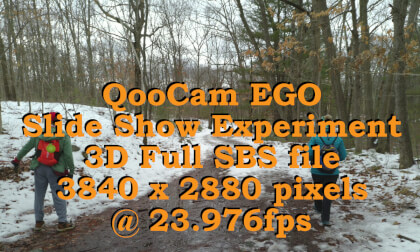
New: AI passthrough!
This amazing Deo feature uses the power of AI to turn every VR scene into AR passthrough! Now you can take characters out of VR and have them right there with you - as if they were in the same room.
Notice: AI Passthrough is presently in beta mode, and as such, users may encounter occasional service imperfections. The feature is currently exclusive to the DeoVR app, but it will soon be accessible on both browsers and mobile devices. Your feedback is highly encouraged and appreciated.
Recommended headsets:
Meta Quest 3, and Quest Pro with stereoscopic color passthrough, Pico 4 (monoscopic color passthrough).
Compatible headsets:
Quest 2, Valve Index (monoscopic black and white passthrough).
Passthrough is not compatible yet for Oculus Link cable.
Check out our complete guide to passthrough and join in the discussion at our busy forum.
The purpose of this video is purely demonstrational, better phones or cameras could be used and fine tuning could be done but this is a one-off as one of my phones was zoomed in to match the FOV of the other.
The idea is that human vision is foveated and taking this into consideration is helpful when creating headsets but could be so even for cameras.
The video is rendered in 8K but as the phone videos are pretty zoomed in at around 60 degrees FOV, it would theoretically take 24K video to saturate what was recorded by the phones. And this could be higher for other setups.
The background is a 3D VR180 video shot with Lenovo Mirage but it could have been a photo or even 2 panoramas/ spheres shot with phones. When looking inside the sharp rectangle, it doesn\'t matter much that the rest is lower res or maybe not even video or maybe even shot as photospeheres with a phone.
VR Camera manufacturers could make it seamless and they might want to take foveation into consideration in the future, for a number of reasons and maybe produce cameras with not only 2 fisheye lenses but maybe even 2 narrower field of view cameras above. A gyro and the ability to stabilize the video inside 3D 360 would also be helpful.
A setup like this would work well in conjunction with foveated headsets like Varjo.
























